
|
The history of the British in India is well known. The East India Company was formed in the year 1600 and was given a royal charter granting them a British monopoly on
trade with the Indies. The company soon began sending ships to India and Java. Initially, the Java trade was the most profitable, but this was displaced soon by the India trade.
The company's first factory or trading post was established in 1611 in Masulipatam on the southeastern coast. In 1639, the company received a grant of a lease of Madras from
the king of Chandragiri. There they built Fort St. George and Madras replaced Masulipatam as the company's principal settlement on the Coromandel coast.
At the time that the company received the grant of Madras, they also received a grant to mint coins at a price of paying the Chandragiri Raja one and a half per cent as a royalty.
The first British coins made in India were gold pagodas, made to resemble the coins of the Vijayanagar kings, who were the Chandragiri Raja's suzerains.
|
 |
Madras Presidency |
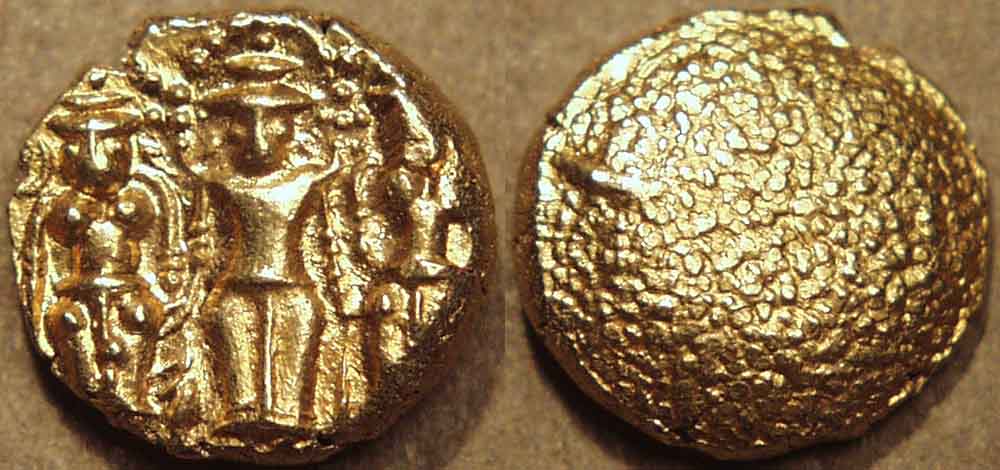
|
BRITISH INDIA, Madras Presidency: Gold "3-swami" pagoda, c. 1691-1740
Weight: 3.43 gm. Diameter: 11-12 mm Die axis: n.a.
Full length figure of Venkateswara standing facing, flanked by his two consorts,
Sridevi and Bhudevi
Granulated field
Reference: Pridmore 3A, KM 289, MNI 1798
|
 |
The earliest British coins in Madras showed a single figure; the so-called "3-swami" pagodas were introduced in 1691. Of these, the early
type shows the figures full length, on a more compact flan relative to the later type.
|
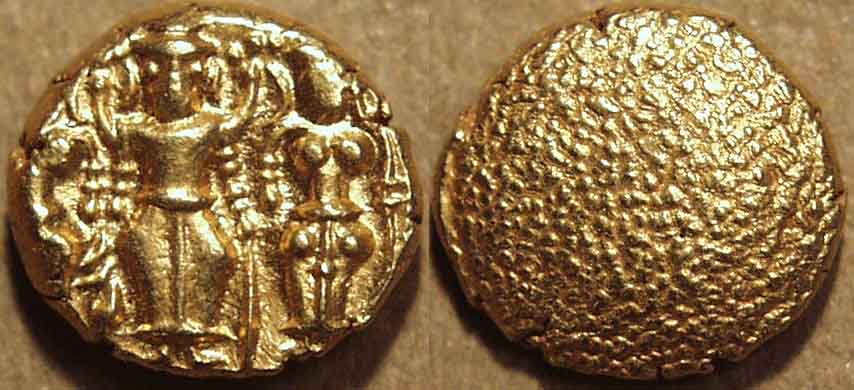
|
BRITISH INDIA, Madras Presidency: Gold "3-swami" pagoda, c. 1691-1740
Weight: 3.42 gm. Diameter: 11 mm Die axis: n.a.
Full length figure of Venkateswara standing facing, flanked by his two consorts,
Sridevi and Bhudevi
Granulated field
Reference: Pridmore 3A, KM 289, MNI 1798
|
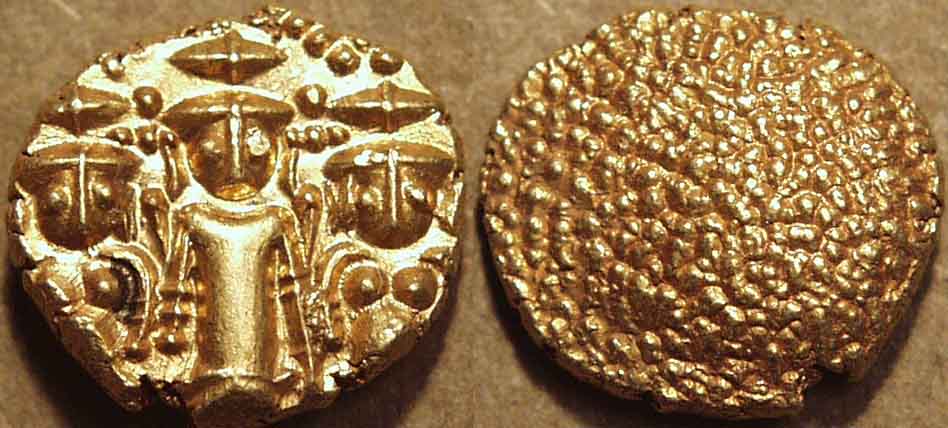
|
BRITISH INDIA, Madras Presidency: Gold "3-swami" pagoda, c. 1740-1807
Weight: 3.44 gm. Diameter: 11-13 mm Die axis: n.a.
Three-quarter length figure of Venkateswara standing facing, flanked by his two consorts,
Sridevi and Bhudevi
Granulated field
Reference: Pridmore 3B, KM 304, MNI 1799
|
 |
The later type of the so-called "3-swami" pagoda shows the figures three-quarter length, on a relatively broader flan than the early type.
|
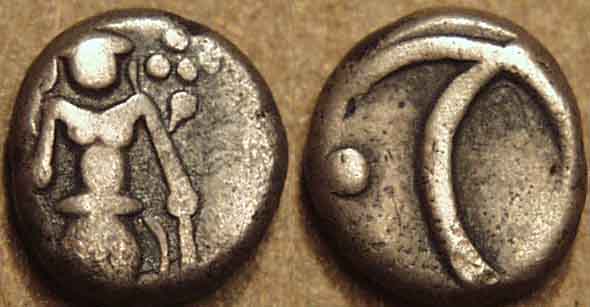
|
BRITISH INDIA, Madras Presidency: Silver Vishnu fanam, 1764-1807
Weight: 0.83 gm. Diameter: 8 mm Die axis: 12 o'clock
Four-armed Vishnu standing facing, holding chakra in each upper hand
Double C monogram
Reference: Pridmore 19, KM C416, MNI 1807-08
|
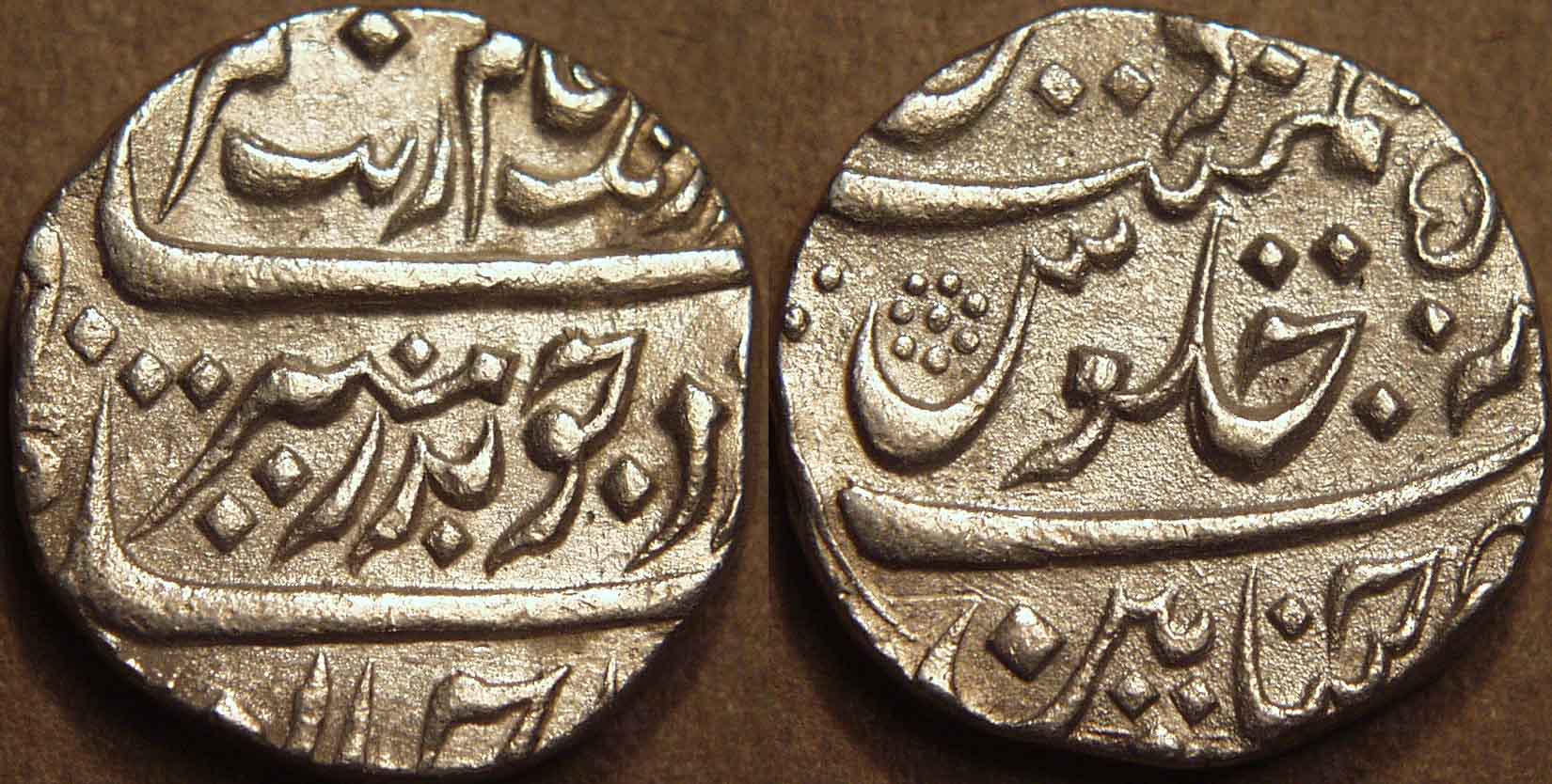
|
BRITISH INDIA, MADRAS PRESIDENCY: Silver rupee ino Aurangzeb Alamgir I,
Chinapatan, c. 1707
Weight: 11.45 gm. Diameter: 22 mm Die axis: 3 o'clock
Legend
Legend, including mint name Chinapatan and regnal year 5x (probably 51)
Reference: Pridmore 118, KM --- (unlisted?), MNI 1825
|
 |
Silver rupees were introduced into southern India by Aurangzeb after his conquest of Golconda and Bijapur in 1687. The company
sought permission to mint rupees in Madras, and received this permission from Kam Baksh, the son of Aurangzeb, in 1692. The so-called "Madras rupee" appears to have been
struck primarily for use in Bengal. This coin is in the name of Aurangzeb Alamgir I, whose last year was RY 51 (1707). Pridmore does not record a coin dated RY 50, so it is likely
this coin is a year 51 issue.
|
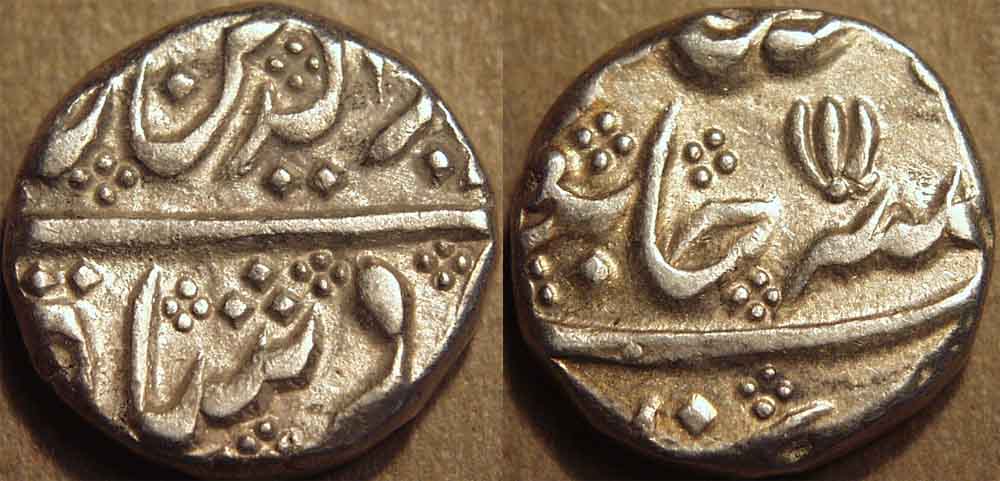
|
BRITISH INDIA, MADRAS PRESIDENCY: Silver rupee ino Alamgir II,
Arcot, c. 1759-1807
Weight: 11.50 gm. Diameter: 22 mm Die axis: 12 o'clock
Legend
Legend, including mint name Arcot, mintmark lotus and regnal year 6
Reference: Pridmore 140, KM 384, MNI 1829-32
|
 |
The "Arcot rupee" appears to also have been struck primarily for use in Bengal. This coin is in the name of Alamgir II, who ruled
1754-1759. However, the regnal year 6 was frozen after the Emperor's death and the coins continued to be minted until 1809.
|
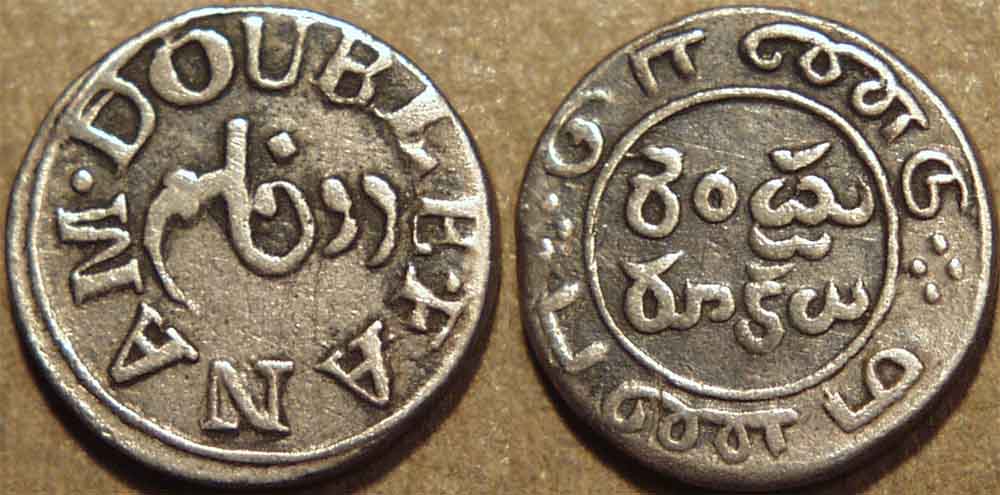
|
BRITISH INDIA, Madras Presidency: Silver double fanam, 1807
Weight: 1.76 gm. Diameter: 13 mm Die axis: 3 o'clock
Denomination Double Fanam in Persian (center) and English (circular), no center circle
Denomination in Telugu (center, within center circle) and Tamil (circular)
Reference: Pridmore 164, KM 341, MNI 1841
|
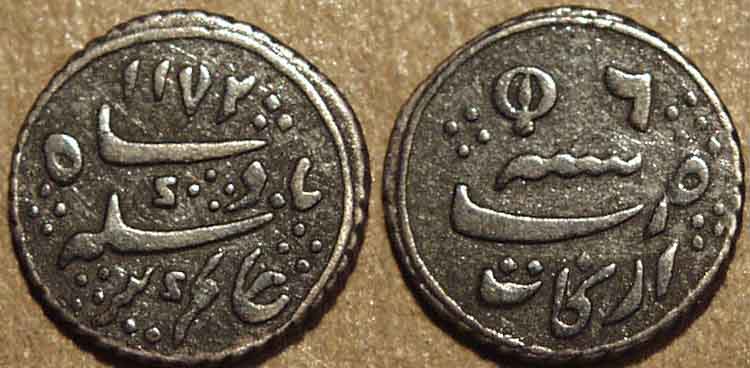
|
BRITISH INDIA, MADRAS PRESIDENCY: Silver 1/16 rupee (1 anna) ino Alamgir II,
Madras, 1817-1835
Weight: 0.69 gm. Diameter: 10 mm Die axis: 12 o'clock
Legend, including name of Alamgir and AH date 1172
Legend, including mint name Arcot, mintmark closed lotus and regnal year 6
Reference: Pridmore 262, KM C480, MNI 1869
|
 |
The regnal year 6 and AH date of 1172 was frozen after the Emperor's death. This coin belongs to the third European style issue of
1817-35. The smallest denomination in the first and second issues was the one-eighth rupee, or 2-anna coin, making this the first issue of the 1-anna (1/16 of a rupee).
|
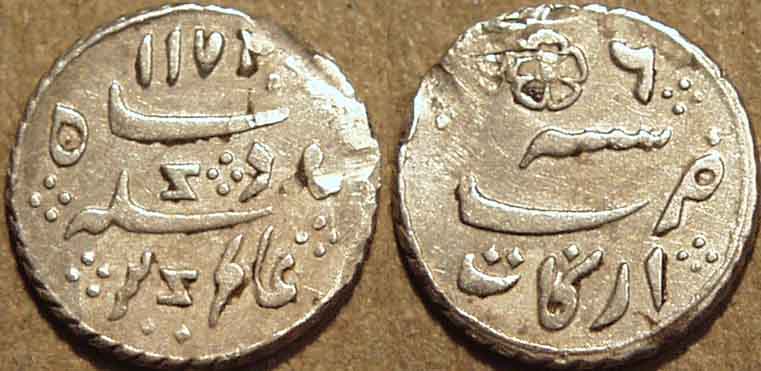
|
BRITISH INDIA, MADRAS PRESIDENCY: Silver 1/16 rupee (1 anna) ino Alamgir II,
Calcutta, 1823-25
Weight: 0.71 gm. Diameter: 10.5 mm Die axis: 12 o'clock
Legend, including name of Alamgir and AH date 1172
Legend, including mint name Arcot, Calcutta mintmark rose and regnal year 6
Reference: Pridmore 267, KM C480c, MNI 1877
|
 |
This coin belongs to the Calcutta issue of 1823-25, notwithstanding the naming of Arcot as the mint on the coin. The mintmark of
Calcutta was the rose.
|
|
|